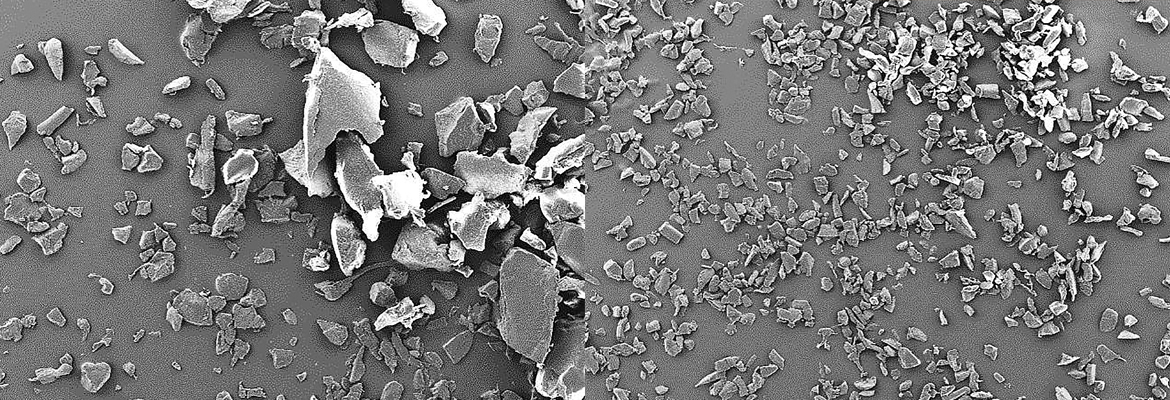Plastic. An essential material that for decades has been managed inadequately. An unsustainable cycle from the cradle to the grave. The lack of circularity is disastrous with results speaking for themselves. With the proliferation of different types of polymers, recycling becomes very difficult. A large proportion of plastics – with the exception of the six types used for packaging – have end-of-life destinations that are completely unsustainable, such as incinerators, landfills, or, worst of all, directly into natural environments and often the sea. And, within this negative framework, bioplastics should also be considered: their final destination should never be recycling, or worse still, the environment. The latter may seem “natural” because the polymers in question are generally biodegradable, but the ideal final use for bioplastics is composting them with the organic waste produced in all our households. The media should also take care to present the issue correctly, avoiding the risk of the “bio” prefix becoming a magical pass for citizens to dispose of bioplastic products in nature. The use of bioplastics is actually an “efficient” solution to reduce the use of fossil-origin plastics, thus decreasing the CO2 production associated with the latter. Bioplastics are essentially neutral in terms of emissions, but they should not be seen as a solution to problems like littering, or, even more importantly, as an attenuation of the more severe damage, especially that which is caused to marine species. Within this general scenario, Novamont has put the biopolymers it produces – known as Mater-Bi – through a series of environmental tests, whose findings were illustrated at a recent event in Rome.

The Destiny of Bioplastics
“Biodegradable plastics were designed to make products that are recoverable through organic recycling, such as composting, or for specific purposes like the mulching film used in agriculture,” explained Francesco Degli Innocenti, responsible for the Ecology of Products at Novamont, who added: “they are also useful instruments for the separate collection of organic waste, as biodegradable containers for material that is equally biodegradable.” Outside of this “ideal” framework, there is also the inevitable reality that waste is dumped into natural environments, regardless of whether a plastic product is “bio” or not, a reality which has to be taken into consideration when discussing biodegradable polymers. It is interesting to examine the journey of this waste, 20% of which ends up in the sea. Of this marine litter, 80% ends up in the sea after having been disposed of on land, while the rest is thrown directly into the water.

Before we look at the details, it is essential to clearly delineate the situation. A plastic bag, “bio” or otherwise, that is abandoned in a natural environment is a potential danger that can cause damage if, for example, it is swallowed by marine fauna, while the risk is the probability that a source of danger ends up causing damage. The environmental risk, therefore, depends on the concentration of the “dangerous factor” and on the length of time when it can be found in a given environment. And here we see how biodegradability, understood as the complete conversion of the polymers into CO2 and water by microorganisms such as bacteria, becomes important. “This means that the material is “eaten by bacteria,” – declared Christian Lott, a marine biologist at the HYDRA research institute who has directed over 100 projects and worked with coral reefs – “a process that has nothing to do with the fragmentation, deterioration and disintegration of the material.” This distinction is important, both in terms of research methodology and of the general conception of biodegradability. For years the latter was seen as the “disappearance from sight” of a given object, which in the case of fossil-based plastics does not equate to a true natural degrading of the polluting substances in the environment. This misunderstanding allowed fossil-origin plastic bags to be labelled – misleadingly – as biodegradable.

In the Field
To determine the biodegradability of plastic materials in contact with marine microorganisms, a series of Mater-Bi samples were exposed to the effect of marine sediment, both in the lab and in real marine environments. Biodegradation was determined with specific methodologies that are standardised at the international level. What emerged is that materials made from Mater-Bi show biodegradation values in line with the cellulose materials used as controls – such as paper, which has a low environmental persistence. But this was not enough. Using, once again, cellulose materials as a control, three tests took place to evaluate the toxicity of Mater-Bi fragments in relation to several organisms adopted as models of marine biodiversity. The first test was related to the inhibition of algal growth in Dunaliella tertiolecta Butcher, a single-cell seaweed that subsists via photosynthesis. The second experiment analysed embryotoxicity in the gametes and embryos of Paracentrotus lividus, a sea urchin in the Parechinidae family, common in the Mediterranean Sea. Finally, the third test concerned the fry (juvenile fish) of Dicentrarchus labrax, better known as seabass, evaluating mortality, genotoxicity and oxidative stress.

“The eleutriate solutions [obtained from mixing the sediment to be sampled with water that has the same characteristics as the body of water being studied, ed.] obtained from marine sediments exposed for 6 and 12 months to Mater-Bi fragments (in a 1% proportion) demonstrate the absence of toxic effects in all three model organisms, both in an absolute sense and when compared with the eleutriate solutions exposed to cellulose,” affirmed Silvia Casini, Associate Professor of Ecology and Ecotoxicology at the University of Siena. “The degeneration process of Mater-Bi did not generate or transfer toxic substances that could cause alterations to the growth of Dunaliella tertiolecta, embryotoxicity in Paracentrotus lividus or oxidative stress or genotoxicity in seabass.”

Therefore, both in terms of degradation and of toxicity in the marine biosphere, Mater-Bi seems to not cause problems. However – as has been said – this should not be an alibi for littering or similar damaging practices. Catia Bastioli, CEO of Novamont, emphasised this point in her closing speech at the event, which reconnected the issue with the wider scenario. The speech went beyond the analyses made in response to the alarming data released in recent months about the worrying timeframes for biodegradation of bioplastics in the marine environment. “Bioplastics, and the bioeconomy more generally, constitute a proposal to reconnect economy, society and territory,” said Bastioli. “In truth, what is creating problems for the marine environment is the lack of respect we generally have for our land. The entire agro-industrial sector has to be repurposed with the objective of regenerating territories. And the key to doing this is the circular bioeconomy, which we have a duty to accelerate, a duty that is made even more urgent by ever increasing pressure on our ecosystems.” All of this while keeping in mind the importance of constant scrutiny of the recycling sector, because biodegradability and non-toxicity are not a “licence to dispose” of anthropogenic products in nature, where each one represents a potential danger.
“La biodegradazione in mare del Mater-Bi,” 2 July 2019 Rome, www.novamont.com/leggi_evento.php?id_event=157
Top image: Biodegradation trials with ground Mater-Bi at different grain sizes



